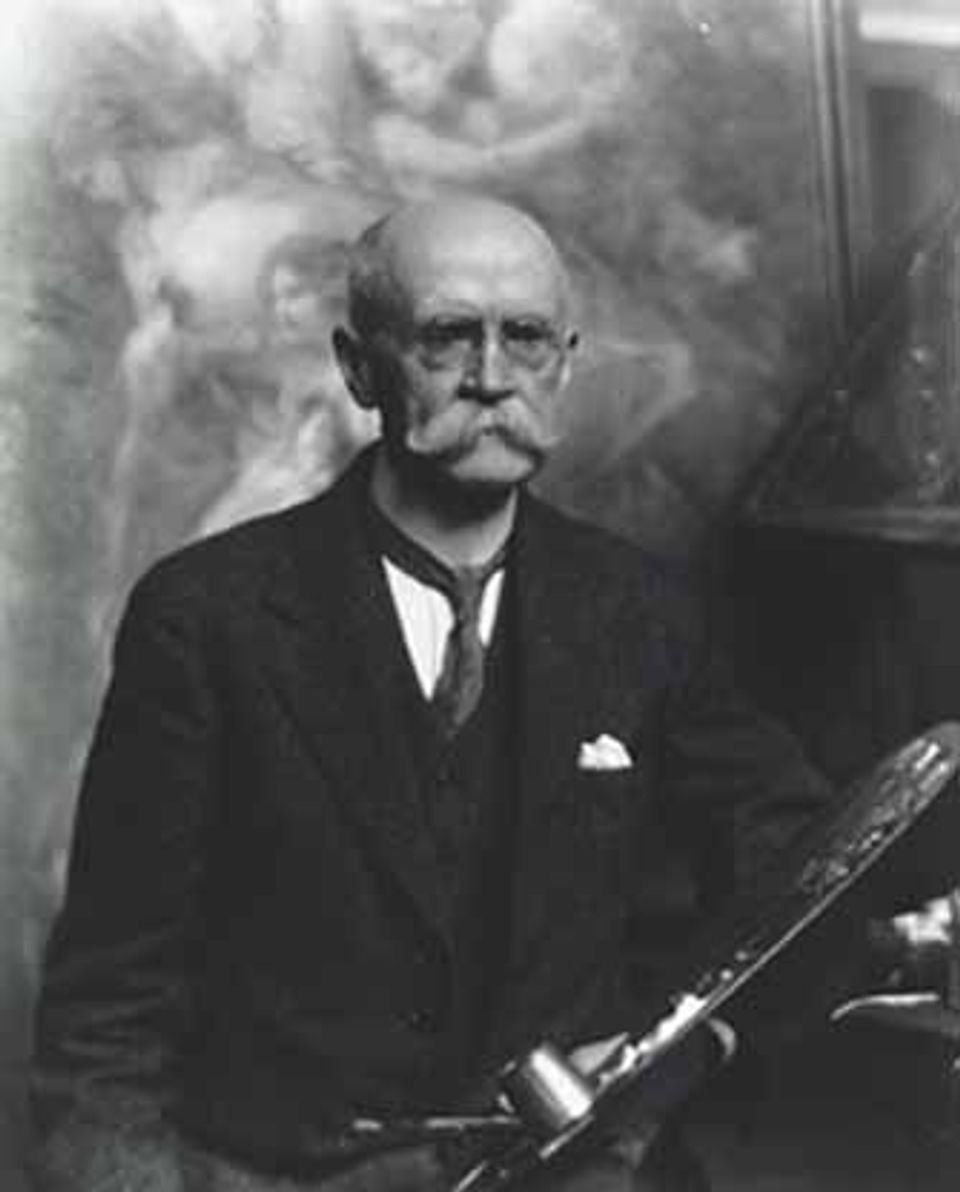Edwin Howland Blashfield

- Died
- South Dennis, Massachusetts, United States
- Nationalities
- American
- Biography
Muralist. One of the most notable muralists of his day, he studied with the French academic painters Léon Bonnat and Jean-Léon Gérôme. His murals decorated high-profile public and commercial buildings, including the Library of Congress.
William H. Truettner and Roger B. Stein, editors, with contributions by Dona Brown, Thomas Andrew Denenberg, Judith K. Maxwell, Stephen Nissenbaum, Bruce Robertson, Roger B. Stein, and William H. Truettner Picturing Old New England: Image and Memory (Washington, D.C.; New Haven, Conn; and London: National Museum of American Art with Yale University Press, 1999)
- Artist Biography
Born in New York and groomed for a career in engineering, Blashfield studied at Boston Latin School, Harvard College, and Massachusetts Institute of Technology (MIT). While at MIT, his mother, an artist, sent some of his drawings to the French academic painter Jean Léon Gérôme, whose interest convinced Blashfield's father to allow his son to pursue a career in art. He studied in Paris with the French history and portrait painter Léon Bonnat from 1867 to 1870 and, interrupted by the Franco-Prussian war, from 1874 to 1880. During the interregnum, he traveled in Europe and returned to New York, where he painted genre pictures. He settled in New York in 1881, producing paintings and illustrations for St. Nicholas Magazine and for books, and decorating private homes. Not until 1892, at the request of Frank Millet, whom he had met during a stay, in Broadway, England, did he begin the large mural painting at the World's Columbian Exposition for which he became well known. The patriotism evident in his public commissions for state capitols and court houses took, the form of triumphal, classicizing allegories. He continued to paint large murals for public and private commissions, including the Library of Congress and the Appellate Division Courthouse in New York, until his beaux-arts style was no longer in favor. He closed his studio in 1933, when Public Works of Art project muralists were using a less decorative style, harsher colors, and dissenting political themes.
Joan Stahl American Artists in Photographic Portraits from the Peter A. Juley & Son Collection (Washington, D.C. and Mineola, New York: National Museum of American Art and Dover Publications, Inc., 1995)













